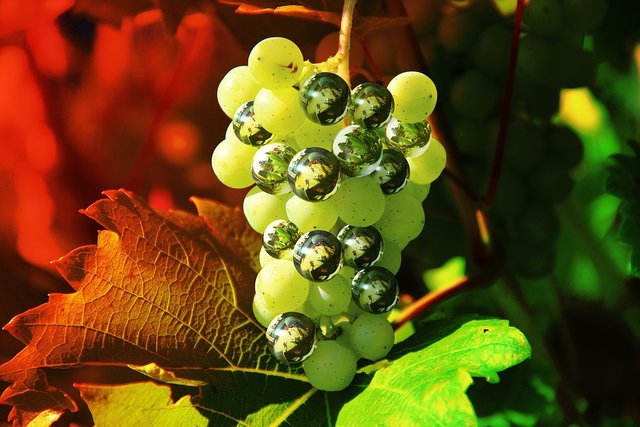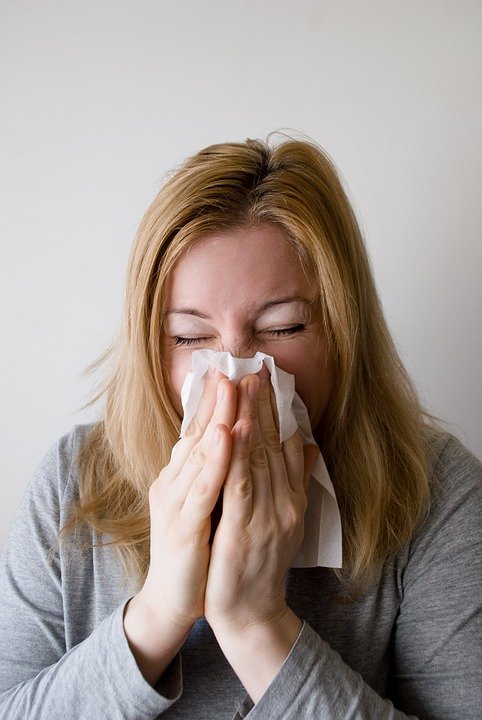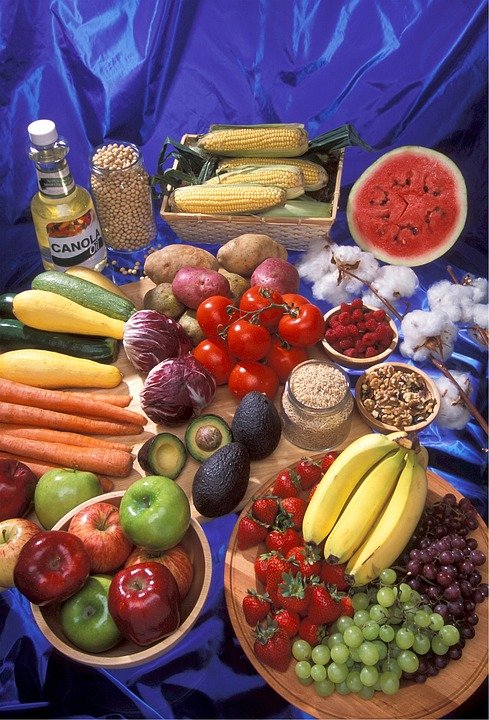Genetically Modified Food—Is It Safe for You?
DEPENDING on where you live, you may have had some genetically modified (GM) food in your breakfast, lunch, or dinner today. It might have been in the form of potatoes with a built-in insect repellent or tomatoes that stay firm longer after being picked. In any case, the GM food or ingredient may not have been labeled, and your palate could hardly distinguish it from the natural one.
Even as you read these lines, such GM crops as soybeans, maize, rapeseed, and potatoes are growing in Argentina, Brazil, Canada, China, Mexico, and the United States. According to one report, “by 1998, 25 percent of corn, 38 percent of soybeans, and 45 percent of cotton grown in the United States were genetically altered, either to make the crops resistant to weedkillers or to produce their own pesticides.” By the end of 1999, an estimated 100 million acres [40 million ha] were covered with GM crops in commercial cultivation worldwide, though not all of these are food crops.
Is genetically altered food safe for you? Do the scientific techniques used to produce GM crops pose any threat to the environment? In Europe the debate over GM foods is heating up. Said a protester from England: “My only objection to genetically modified foods is that they’re unsafe, unwanted and unnecessary.”
How Is Food Genetically Altered?
The science behind GM food is called food biotechnology—the use of modern genetics to improve plants, animals, and microorganisms for food production. Of course, the concept of tinkering with living things is almost as old as agriculture itself. The first farmer who bred his best bull with the best cow in his herd to improve the stock, instead of allowing the animals to breed randomly, was implementing biotechnology in a rudimentary sense. The first baker who used yeast enzymes to make bread rise was likewise using a living thing to produce an improved product. The one feature common to these traditional techniques was the use of natural processes to bring about changes in foods.
Modern biotechnology likewise employs living organisms to make or modify products. But unlike traditional methods, modern biotechnology allows for modifying the genetic material of organisms directly and precisely. It enables the transfer of genes between completely unrelated organisms, allowing for combinations unlikely to occur by conventional means. Breeders can now take qualities from other organisms and put them into the genome of a plant—for instance, frost tolerance from fish, disease resistance from viruses, and insect resistance from soil bacteria.

image credit
Suppose that a farmer does not want his potatoes or apples to turn brown when they are cut or bruised. Researchers come to the rescue by removing the gene that is responsible for this browning and replacing it with an altered version that blocks browning. Or let us assume that a beet grower would like to plant earlier in order to reap a better harvest. Ordinarily he couldn’t because the beets would freeze in the cold weather. Biotechnology comes into play when genes from fish that easily survive in cold water are transplanted into the beets. The result is a GM beet that can withstand temperatures as low as 20°F. [-6.5°C], more than twice as cold as the lowest temperature beets can typically withstand.
Such traits that are the result of single-gene transfers, however, have limited effectiveness. To alter more complex traits, such as growth rate or drought resistance, is quite another matter. Modern science is still unable to manipulate whole groups of genes. After all, many of these genes have not even been discovered yet.
A New Green Revolution?
Even the limited genetic modification of crops fills biotechnology’s proponents with optimism. They say that GM crops promise a new green revolution. A leader of the biotechnology industry declares that genetic engineering is “a promising tool in the effort to provide more food” to a global population that grows by about 230,000 people every day.
Already, such crops have helped to hold down the cost of food production. Food plants have been fortified with a gene that produces a natural pesticide, eliminating the need to spray clouds of toxic chemicals over acres of crops. Modified crops in the works include beans and grains with much higher levels of protein—of no small benefit to poorer parts of the world. Such “superplants” could pass their useful new genes and traits on to succeeding generations, yielding more bountiful harvests on marginal land in poor, overpopulated countries.
“There is certainly much to be said for improving the lot of the farmers of this world,” said the president of a leading biotechnology firm. “And we’ll do that—by using biotechnology to do on the molecular and single-gene level what plant breeders have been doing with ‘whole plants’ for centuries. We will create better products, that meet specific needs and will do it faster than ever before.”
However, according to agricultural scientists, the rush to promote genetic engineering as a solution to world food shortages is undermining current research on crops. Although it is less exotic, this research is more effective and could also benefit the poorer parts of the world. “We shouldn’t be driven by this unproven technology when there are many more efficient solutions to food problems,” says Hans Herren, an expert on fighting crop diseases.
Ethical Concerns
On top of possible public-health and environmental risks, some feel that the genetic modification of crops and other living organisms presents moral and ethical challenges. Scientist and activist Douglas Parr observed: “Genetic engineering crosses a fundamental threshold in the human manipulation of the planet, changing the nature of life itself.” Jeremy Rifkin, author of the book The Biotech Century, put it this way: “Once you can cross all biological boundaries, you begin to see a species as simply genetic information that is fluid. That brings us into a whole new way to conceptualise not only our relationship with nature, but how we use it.” He therefore asked: “Does life have intrinsic or just utility value? What is our obligation to future generations? What is our sense of responsibility to the creatures with which we coexist?”
Others, Prince Charles of England included, argue that transferring genes between utterly unrelated species “takes us into the realms that belong to God, and to God alone.” Students of the Bible firmly believe that God “is the source of life.” (Psalm 36:9) However, there is no real evidence that God disapproves of the selective breeding of animals and plants, something that has helped our planet to sustain the billions of people living on it. Only time will tell if modern biotechnology will harm humans and the environment. If biotechnology really does encroach upon “the realms that belong to God,” then—out of love and concern for humankind—he can reverse such developments.

image credit
Potential Dangers?
Biotechnology has moved at such a dizzying pace that neither the law nor regulating agencies can keep up with it. Research can scarcely begin to prevent unforeseen consequences from arising. A growing chorus of critics warn of unintended results, ranging from severe economic dislocation for the world’s farmers to environmental destruction and threats to human health. Researchers warn that there are no long-term, large-scale tests to prove the safety of genetically modified (GM) food. They point to a number of potential dangers.
● Allergic reaction. If a gene producing a protein that causes allergic responses ended up in corn, for instance, people who suffer from food allergies could be exposed to grave danger. Despite the fact that food-regulating agencies require companies to report whether altered food contains any problem proteins, some researchers fear that unknown allergens could slip through the system.
● Increased toxicity. Some experts believe that genetic modification may enhance natural plant toxins in unexpected ways. When a gene is switched on, besides having the desired effect, it may also set off the production of natural toxins.
● Resistance to antibiotics. As part of the genetic modification of plants, scientists use what are called marker genes to determine if the desired gene has been successfully embedded. As most marker genes provide resistance to antibiotics, critics fear that this could contribute to the growing problem of antibiotic resistance. Other scientists, however, counter that such marker genes are genetically scrambled before use, thus alleviating this danger.
● Spread of “superweeds.” One of the biggest fears is that once modified crops are planted, genes will escape via seeds and pollen to weedy relatives, creating “superweeds” that are able to resist herbicides.
● Harm to other organisms. In May 1999, researchers from Cornell University reported that monarch butterfly caterpillars that ate leaves dusted with pollen from GM corn sickened and died. While some question the validity of this study, there is still some concern that other nontargeted species could be harmed.
● Demise of safe pesticides. Among the most successful GM crops are some that contain a gene that produces a protein toxic to insect pests. However, biologists warn that exposing pests to the toxin produced by this gene will help the pests develop resistance and thus render pesticides useless.

unfortunately the transgenics are a necessary evil for this population that does not stop growing
Go here https://steemit.com/@a-a-a to get your post resteemed to over 72,000 followers.